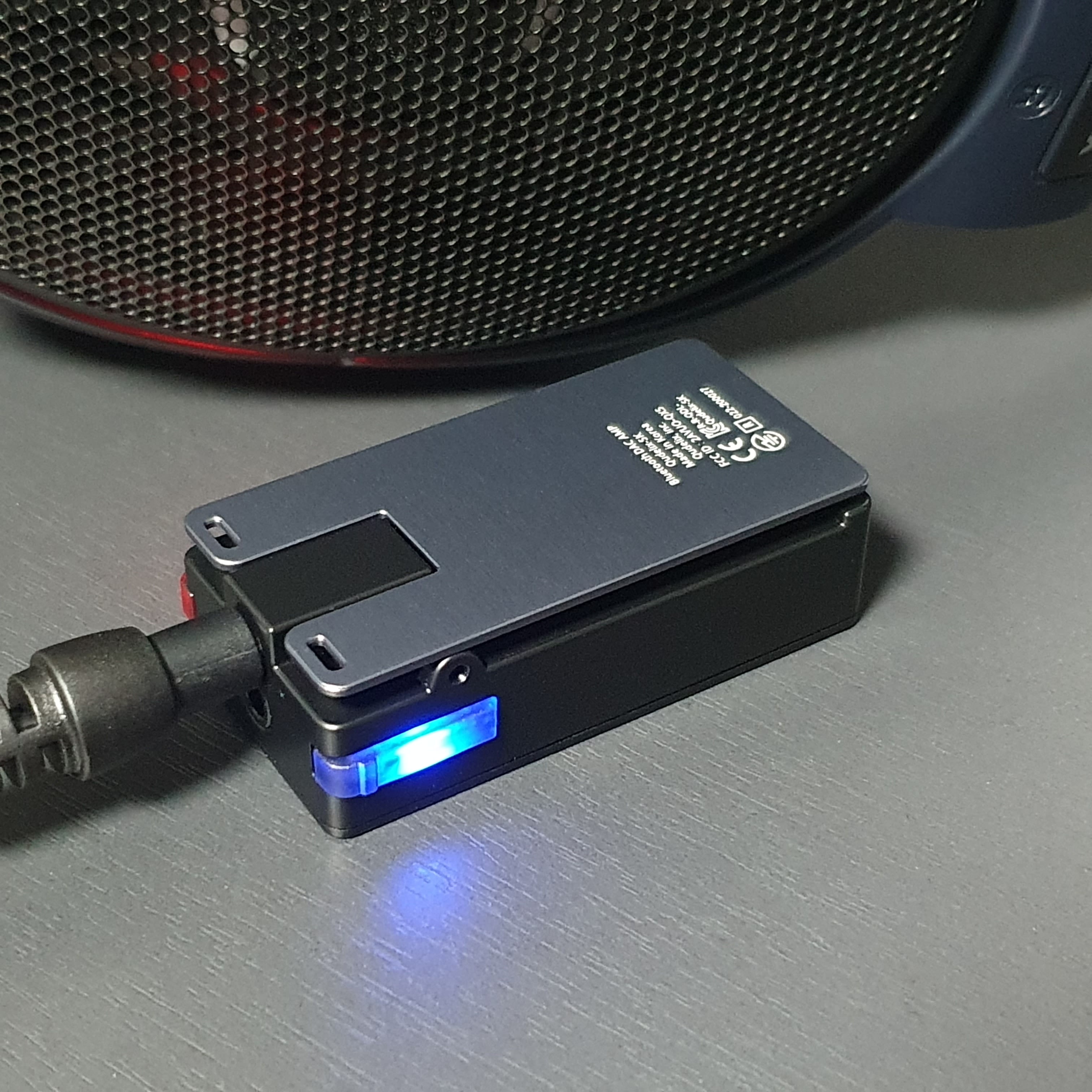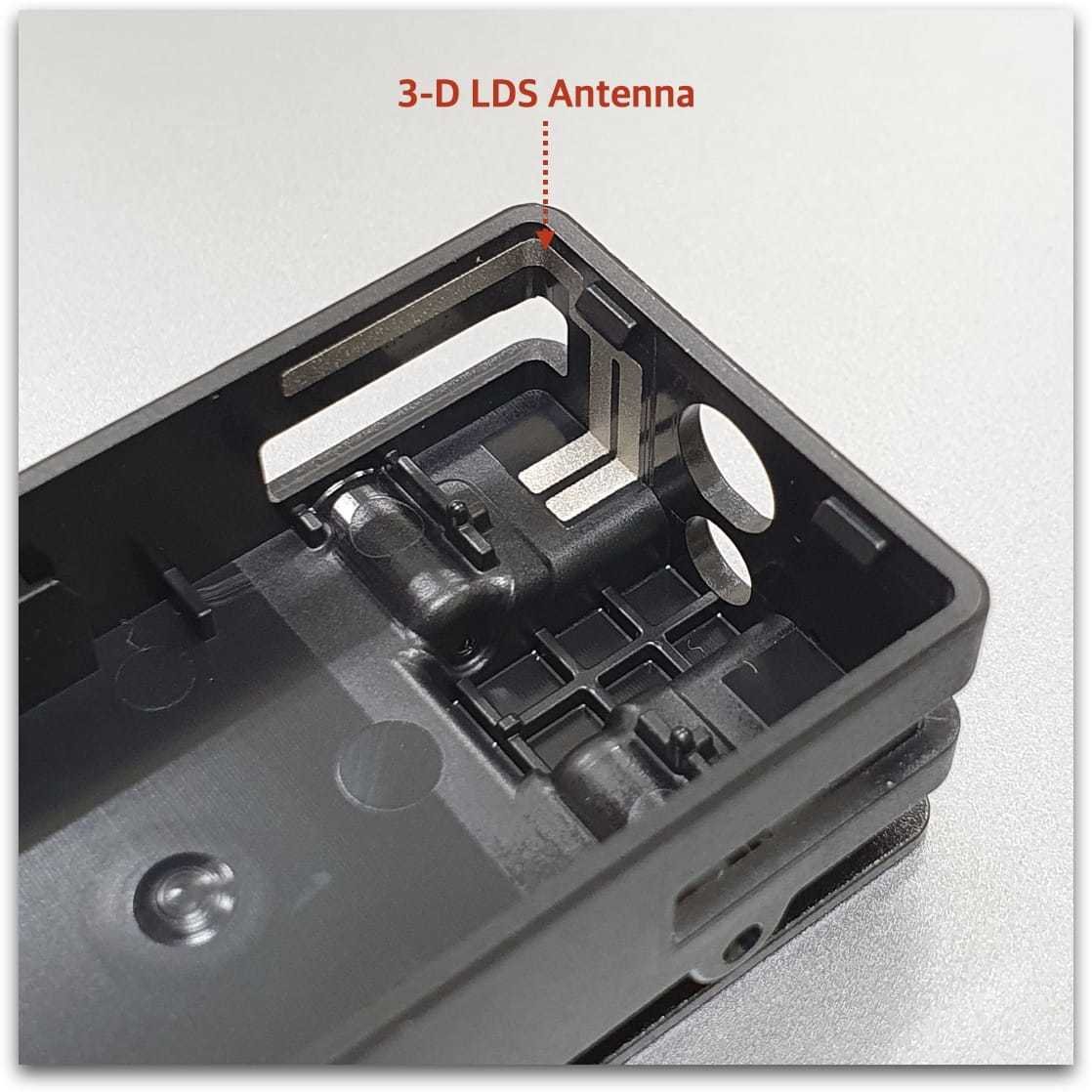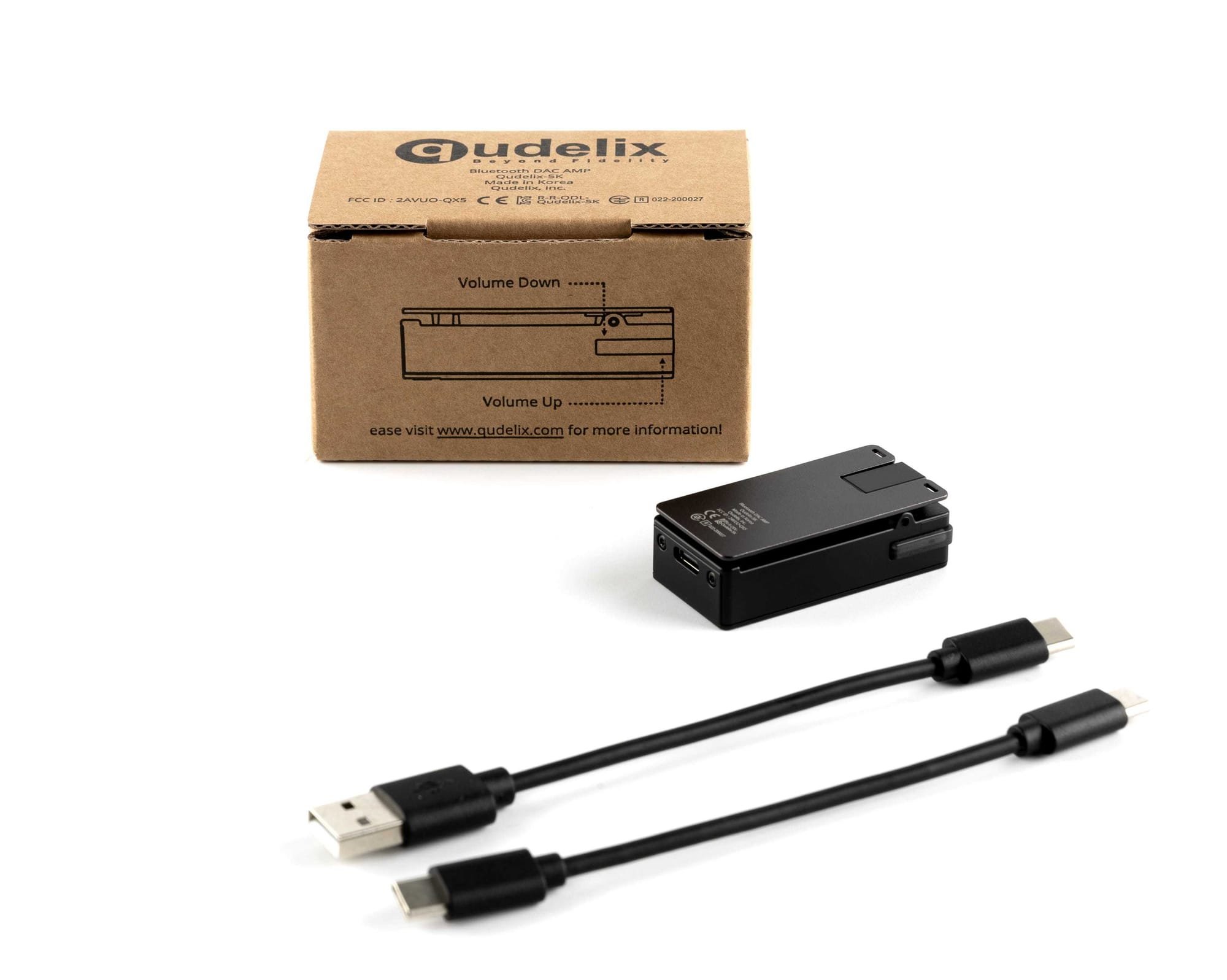The review sample was kindly provided free of charge in exchange for an honest review.
I didn't receive monetary or any other kind of compensation and I don't use affiliate links.
The price of the Qudelix 5K is $109 and you can order it directly from the Qudelix
website.
Qudelix 5K
The Qudelix 5K is so well known among the personal audio community and there are so many reviews floating around that I am a little embarrassed for being so late to the party.
Anyway, better late than never, let's find out more about the Qudelix 5K.
The Qudelix 5K is a thumb drive sized USB DAC dongle with internal battery and Bluetooth connectivity just like the FiiO BTR5.
The Qudelix 5K is using two pieces of the ES9219C SABRE DAC chip, for real balanced output, with an in-house written software and application.
The device has both 3.5mm and 2.5mm headphone outputs with two gain settings.
The 1V RMS mode of the 3.5mm jack offers the best power efficiency at the same sound quality as the 2V RMS mode which additionally delivers enough headroom and loudness for low sensitivity earphones.
The same principle applies to the 2.5mm output where the 2V RMS mode offers the full differential direct audio path that delivers the best linearity and separation, still with enough battery time, and the 4V RMS mode delivers the maximum output power.
For Bluetooth connectivity, the Qudelix 5K is using the latest Qualcomm QCC5124 chip which supports all the latest codec technologies, including aptX Adaptive, LDAC, AAC, aptX HD, aptX, and SBC.
To enhance the PCB reliability and durability, Qudelix are using epoxy underfills on the sensitive BGA parts, although having additional cost increase.
Those parts are bonded twice with soldering and epoxy underfills.
The Qudelix 5K uses a high sensitivity 3-dimensional LDS Antenna printed on the bottom of the case for providing the best RF reception.
The 5K also supports phone calls through the embedded high sensitivity MEMS microphone with the Qualcomm® cVc noise cancellation system.
The 5K is compatible with QX-Over which is an active digital crossover with Qudelix's proprietary DSP technology.
Qudelix 5K automatically detects the QX-Over Earphones, processes the stereo input, and outputs Stereo Low and High band independently to earphones units through 4-channel DAC/AMP.
Qudelix is very informative about the 5K design and implementation so please follow this
link for an in-depth analysis.
Build quality
The Qudelix 5K is compact sized and lightweight, it measures 52.8(H) x 26.7(W) x 15.6(D) mm including the clip and weighs 25g only.
The black, rectangularly shaped, chassis is made from high quality plastic that keeps weight low but is not as durable and beautiful looking as similar devices that are made from CNC aluminum.
The side buttons are also made from semi-transparent plastic and the only metallic part is the shirt clip which is permanently attached to the main body.
At the upper part of the chassis there are located the two headphone outputs and at the bottom the USB type-C port.
Accessories
The Qudelix 5K comes packed in an environmentally friendly cardboard box and includes a USB C to C and USB C to A cables of 120mm length each.
The cables are of typical quality with a plastic sheathing and they are relatively weighty and stiff.
User interface
The Qudelix 5K is the most configurable USB DAC amp on the planet, the software allows the user to adjust pretty much anything.
You can configure the 5K either from the mobile application, which is available for Android and iOS, or the PC Chrome extension.
The mobile application works over Bluetooth and the PC application over USB connection while 5K automatically stores all the settings and reloads them at the boot-up next time.
Firmware updates are done automatically and you can configure pretty much everything, from the power output to the functions of the hardware buttons, power management and battery charging schedules, low pass DAC filter, Bluetooth in-depth settings etc.
There are so many settings that it is impossible to cover everything in the limited space of the review so you better visit the Qudelix website for an in-depth explanation of everything.
The PC Chrome extension
The Qudelix 5K is the only USB DAC dongle in the market to support a PC browser
extension available for Windows, macOS and Linux and allows the user to configure the 5K when it is connected to a PC though the USB cable.
Unlike the competitive products, you don't have to use Bluetooth connectivity in order to configure the 5K while listening to music from the PC and you also have full access to the embedded equalizer which is also effective in USB mode.
Masterclass Equalizer
This is the function that differentiates the 5K from all the competition giving it a fair leap ahead, the embedded 20-Band PEQ/GEQ (64-bit double precision) pro-grade equalizer that Qudelix has developed for it.
The equalizer is effective and processes every incoming audio from everywhere: Youtube, Apple Music, Spotify, iOS, Android, PC, Bluetooth (all Codecs), and USB.
The 5K supports parametric EQ and graphical EQ with the embedded DSP cores performing double-precision 64-bit EQ processing, providing the most accurate and precise frequency response even at low-frequency range.
5K manages and stores the EQ presets in its internal flash memory and automatically reloads the settings at boot-up and resumes the same EQ setting as configured before.
So, once you configure the EQ using the app, you no longer need to launch the app to see if the EQ runs or not.
What is more is that the 5K supports the open source AutoEq project which helps users to load and apply eq presets from the AutoEq project.
The app fetches the AutoEq project data and shows them to users that have access to a database of hundreds of ready made equalizer corrections for nearly all the popular earphones and headphones of the market with a steadily increasing list.
Power output and battery duration
With 4V RMS on tap from the balanced headphone output, the Qudelix 5K can run pretty much every earphone and a lot of sensitive headphones like the Sennheiser HD660S.
The 5K is noise and EMI free with a crystal clear and silent background.
The battery duration is pretty good, depending on the power schedule, the used output and the Bluetooth codec, it can range from a whole 15-17 hours to 5-6 hours.
Listening impressions
The Qudelix 5K was burned for about 100 hours to make sure that it had fully settled down.
I have used various earphones, like the FiiO FA7S and Penon Vortex, the Sennheiser HD660S while the listening tests included both wired and Bluetooth connections.
The Qudelix 5K was updated to the latest firmware version as of 15/03/2023.

The sound is crystal clear and transparent with great source fidelity and very good technicalities.
The 5K has a neutral and balanced sound signature with a touch of the typical ES9219C treble sharpness but not to an annoyingly bright amount.
It just adds plenty of clarity and excellent detail retrieval for the category, the 5K is resolving and detailed but not analytical or too digital sounding.
The presentation is airy with a very energetic treble and an articulated mid-range while the sound is not lacking in musicality, timbre realism and naturalness.
There is plenty of energy that is adding some extra sparkle and liveliness to the sound.
This is not the most analogue and organic sounding DAC but it is certainly not lacking in harmonic wealth and tonal balance.
The bass is tight and controlled with excellent definition and layering but with a slightly lean and dry texture.
The 5K can sound very dynamic and impactful, especially from the balanced output, while it presents a well extended and spacious soundstage that is not too holographic or layered but it has an excellent positioning accuracy.
The very transparent nature of the 5K makes sure that the user is essentially listening to the sound character of the earphones and not the source itself.
So, with the choice of the right headphone the 5K can sound equally enjoyable with all kinds of music and will satisfy the most demanding of the listeners.
As an example you can choose the FiiO FH9 for a cinematic and bass shaking experience or switch to the Sennheiser HD660S for classical music listening like Yuja Wang's latest album.
Bluetooth performance
The Bluetooth connection is very stable and the implementation is actually so good that you will have to do critical listening with high resolution files and good quality earphones in order to spot the differences.
It is not that the wired connection isn't better than the Bluetooth but in most situations you will find yourself preferring the convenience of the wireless connectivity.
Compared to the FiiO BTR5 2021 ($119)
The FiiO BTR5 2021 version is the closest rival to the Qudelix 5K with the same DAC chip configuration but it uses a separate XMOS XUF208 USB receiver that allows for 384kHz/32bit, native DSD256 and MQA decoding.
The BTR5 is also using an FPGA precision clock management with dual independent crystal oscillators while it supports the same Bluetooth codecs with the Qudelix 5K.
The BTR5 has a higher quality, all aluminum chassis with front and back glass panels which give it a more premium feeling and looks but weighing 43g is heavier and bigger than the 5K which has the same size as the FiiO BTR3K.
At the front face there is a very small but useful 0.49" OLED display that allows the user to configure the menus without the need to open the FiiO control application.
The 5K has a larger capacity battery which with the aid of the various power management schedules can keep it running longer than the BTR5.
On a sidenote here is also a size comparison with the FiiO BTR7.

Sound-wise, these two sound more or less the same, you will be hard pressed to notice any audible differences - if any - well, maybe the BTR5 is a touch more refined and cleaner than the 5K.
The key difference between them is in the embedded equalizer, the BTR5 has a simple 10-band one which is only effective in Bluetooth where the 5K has the best and most configurable equalizer which is also effective in USB mode.
In the end
The Qudelix 5K might not be the most beautiful looking or premium made Bluetooth DAC/amp in the market but it stands out not only for the good sound quality but foremost for its most innovative software implementation.
It is accompanied by a great application that is available for all platforms and allows for an in-depth customization and furthermore it has embedded a PEQ/GEQ (64-bit double precision) pro-grade equalizer with additional support for the open source AutoEq project.
If you like to equalize your earphones and have full control of the DAC functionality then the Qudelix 5K is the one to have.
Test playlist
Copyright - Petros Laskis 2023.



















































